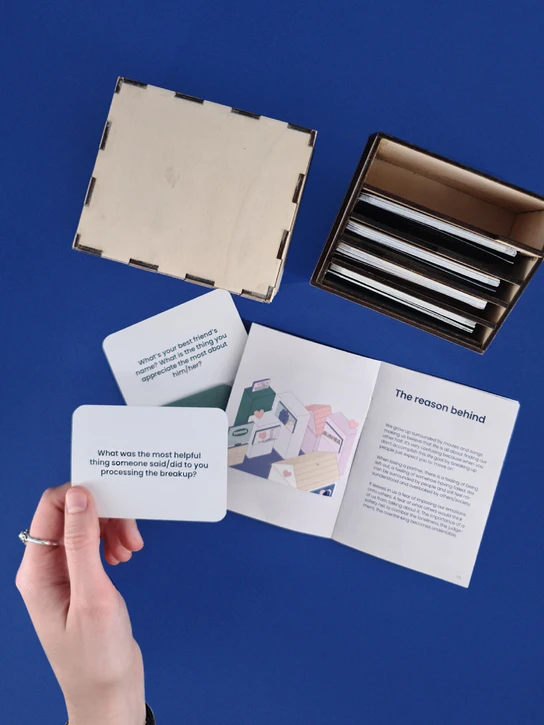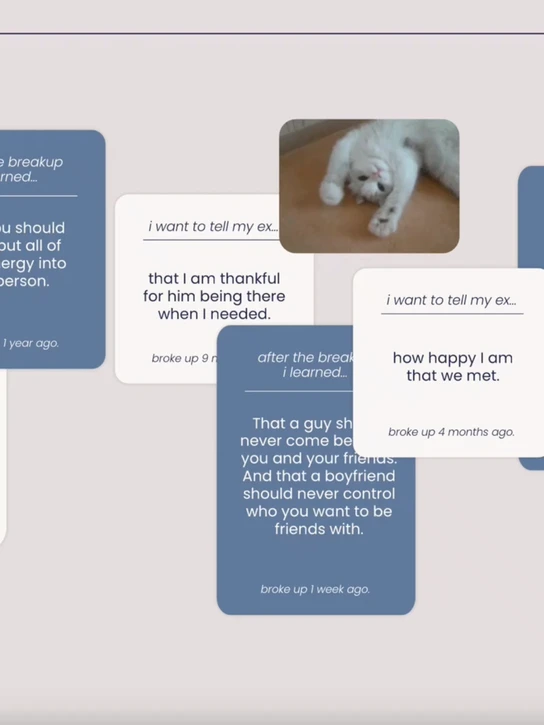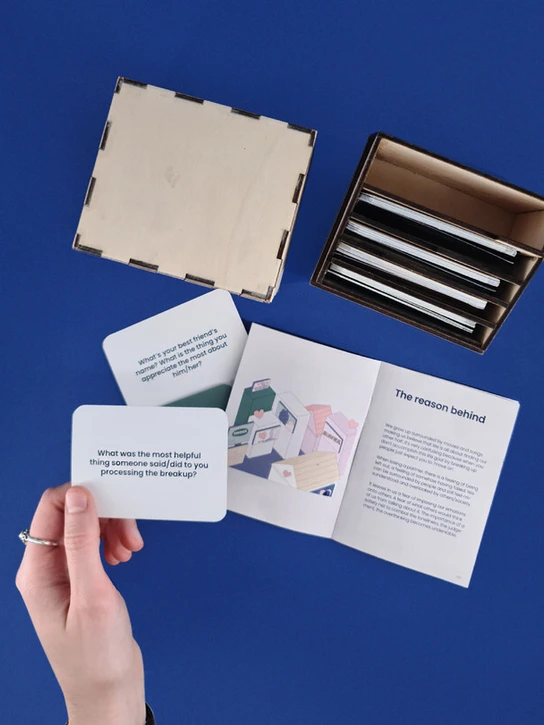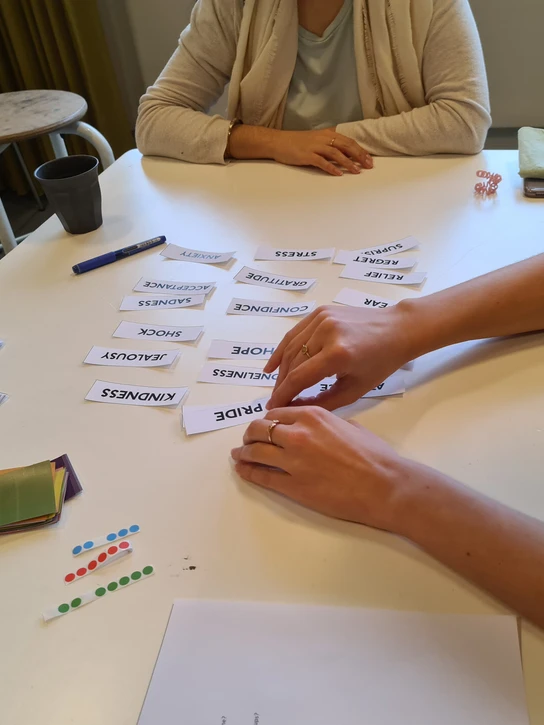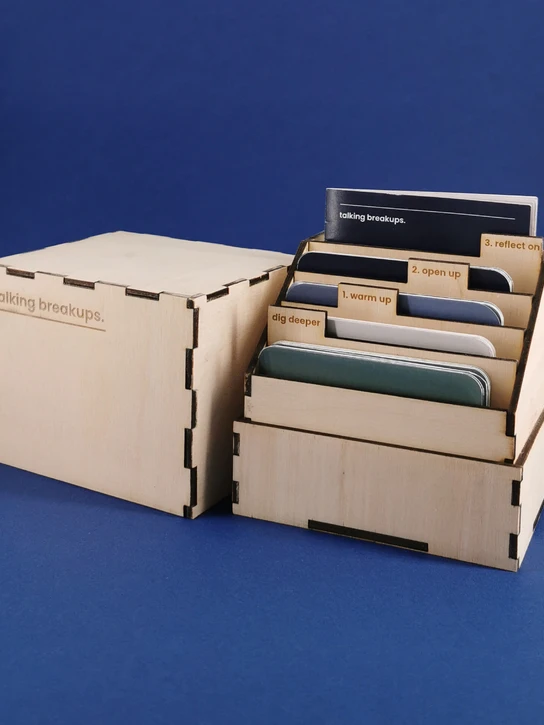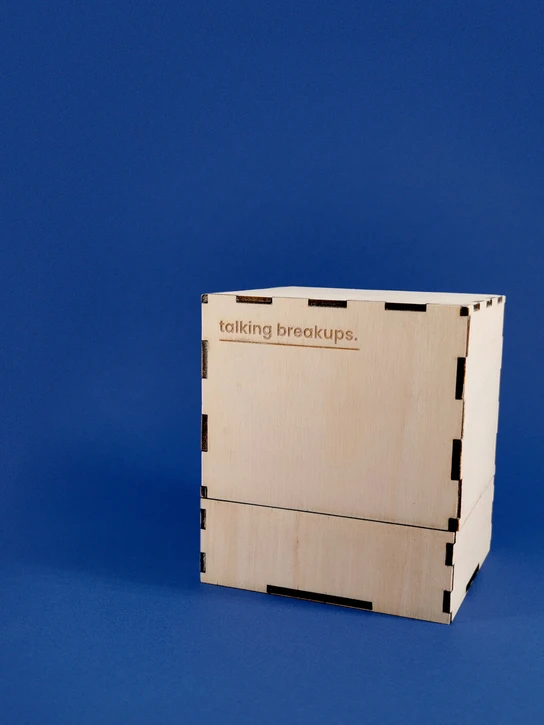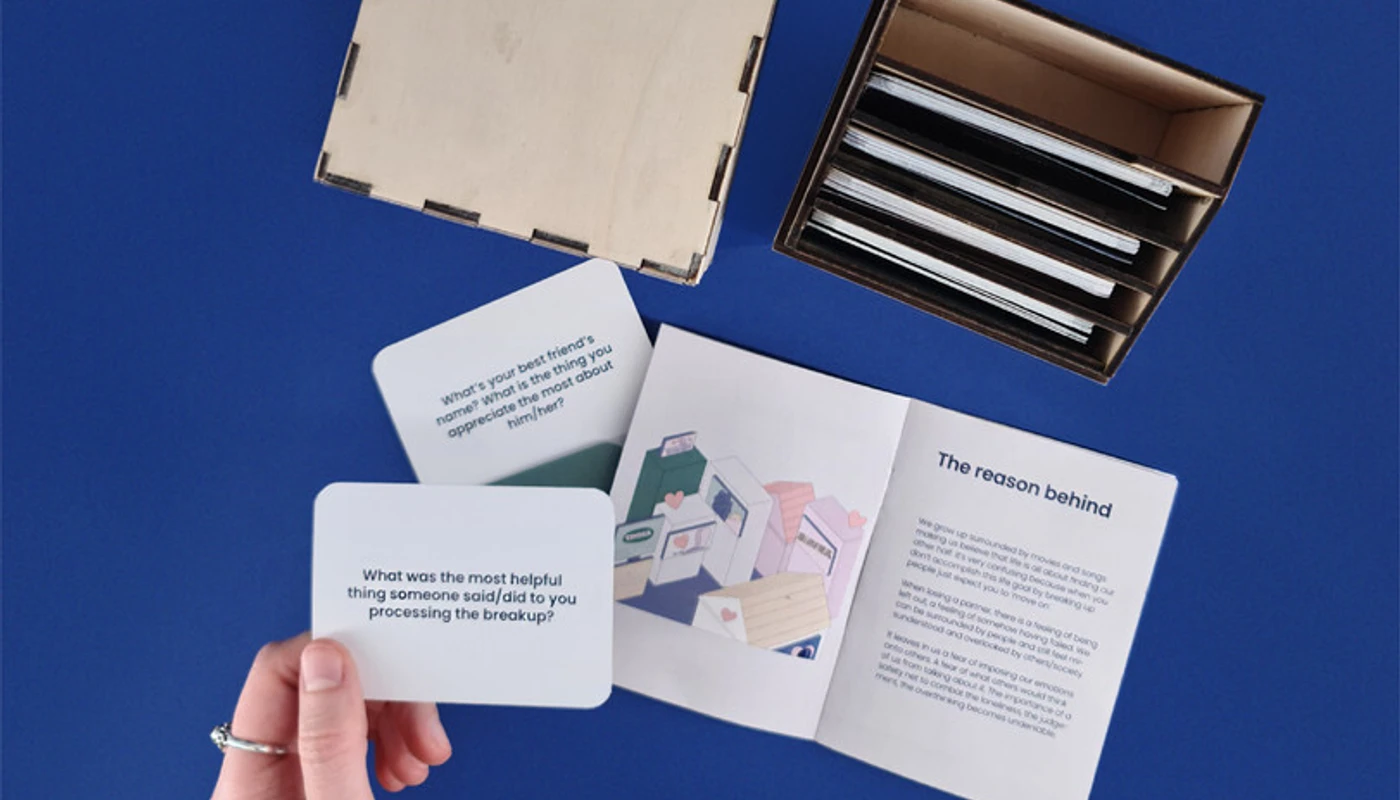
Talking Breakups by Anastasia Nichitsca, Nina Próchniewska and Aitana Kugeler
- Students
-
- Education
- Master
- Subject area
- Communication Design
Industrial Design - Focus area
- Design for People
- Year
- 2020
- Education project type
- Course
About the project
Breakups were an interesting topic for us because it is a very common experience that can cause different, long term types of loneliness. It also shapes the way people see and form their further relationships in life and it makes us wonder why we don’t talk more about it. We not only wanted to explore the breakup, but also the impact on future relations with oneself and others, different coping mechanisms as well as society's stigmas and opinions around breakups.
To check the potential of the project we set up a survey to see if people associate the topic of breakups with loneliness. The survey ended up being a big success as we gathered around 100 responses within the first 48h. Based on this survey we decided our target group, young adults from 20-30-year-olds, both people who have been through a breakup or for friends of a person going through it. Through the survey, we found participants we could work with throughout the project.
To make it easier for the participants to talk about a tough subject we made a conversational tool. We created an open forum and facilitated building connections through sharing personal stories in our cozy common room setting. The main activity of the evening was the conversational toolkit that helped them to open up.
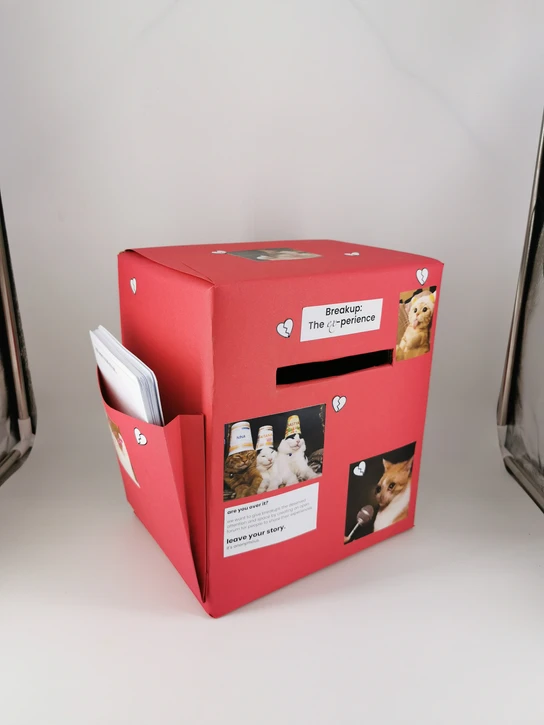
It consisted of 4 types of cards:
- Individual question cards;
- Wild cards that had to be answered by everyone;
- Reminders
- Picture cards for a discussion
To get more specific insights on the breakup experience of our participants we also handed out probes. They included:
- An emotional network map for “during the relationship” vs “after the relationship” as we wanted to understand the impact a breakup has on the connections around us.
- A coping mechanism scales to rate how helpful vs unhelpful and how social vs individual different coping mechanisms are.
- General feedback on their experience working with us both regarding the interviews but also the workshop. They were able to rate the space, our explanations, and activities. We also asked them to let us know how they felt before and after our interactions.
After our workshop, we knew that our outcome would need two channels: a digital version, as in a website, and a physical version, as in events. On the website prototype we provided people with 5 sentences they could complete with their stories. Two of the main used were ‘what I’ve learned after the breakup...’ and ‘I still want to tell my ex...’. It was completely anonymous and people were free to write as much as they wanted.
Our physical prototype was a mailbox with the same templates to fill in. We left it around school and people were able to anonymously write down their thoughts on the provided notes. The goal was to see the reaction and to test if people would use these kinds of services to share their stories. In total, we got around 100 stories which showed the potential for the project.
Finally, Talking Breakups gives people a platform to connect with strangers free from judgment and pressure. This framework welcomes people to leave stories that might not have another place to live in. It provides the needed tools, space, and undivided attention. The project lives and grows from the shared stories, gaining meaning and depth through people opening up to others.
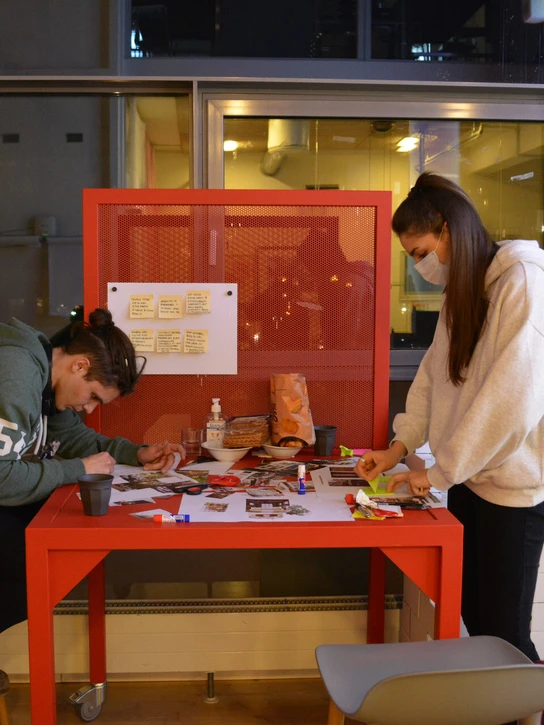
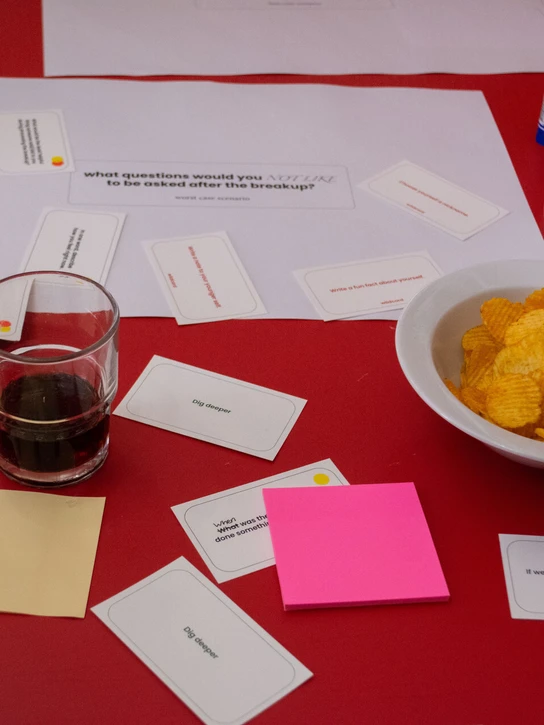
It lives through different mediums:
The website: serves as a digital collection of people’s stories. There are 2 templates to fill in, one hopeful and one to reflect on. They will appear on the main wall next to all the other stories. It serves as a support for people who need a medium to let their thoughts out but wants to do it anonymously.
The video: functions as an explanation of our motivation and an introduction to what talking breakups are about. It translates our key insights from our interviews and workshops into neutral, often abstract, and poetic illustrations. For the music, we collaborated with Luxembourgish musician Hy-Khang Dang.
The toolkit: containing our final deck of cards that support conversation and a manual to explain the rules. People can relate to each other’s experiences which creates special bonds between the groups. The 3 levels of question cards are:
- Warm-up: with questions that will make you gain perspective and challenge the assumptions we create about the people around us.
- Open up: connection questions that make you get closer to the other participants.
- Level up: These questions will make you think about the event but also your personal story.
‘Wait a minute...’ cards that can be used once when you feel like someone is holding something back, asking this person to elaborate on their answer.
The physical events: The goals of these events are to open up, share stories and create connections while doing so. These events are organized by the community itself and promoted on the website. Our manual guides the hosts throughout the whole organization phase to ensure the best outcome.
Teachers on the Empathic Equality course were: Kerstin Bro Egelund & Kathrina Dankl.
